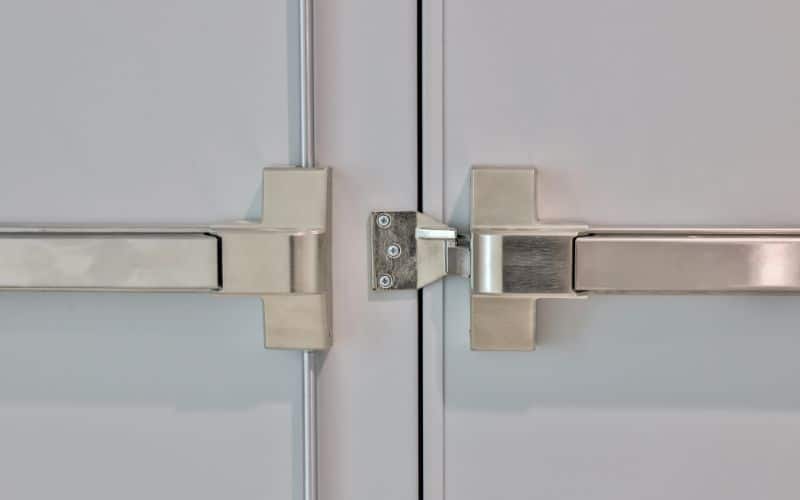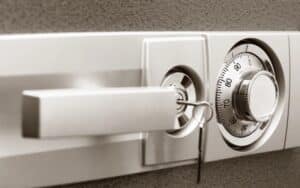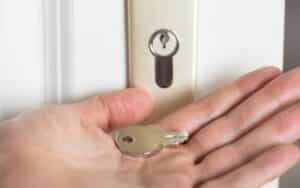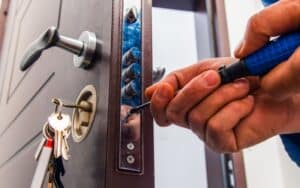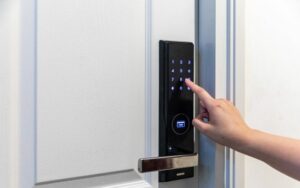Table of Contents
ToggleWhat Exactly is Panic Hardware?
Panic hardware, sometimes known as an exit device or panic device, is a specialized door mechanism designed for swift and effortless exits during emergencies. This vital piece of door hardware is not just a functional tool but a lifesaver, playing a pivotal role in safeguarding occupants from unexpected events and potential dangers.
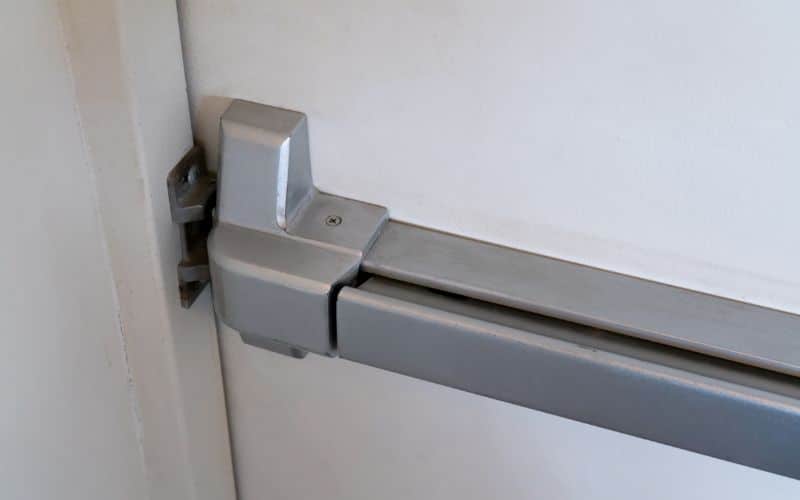
Why Do We Need Panic Hardware in the First Place?
At its core, the necessity for panic hardware stems from its ability to provide an immediate and secure exit route. In critical moments, like fires or sudden emergencies, panic hardware isn’t just a convenience—it’s a lifesaver. By enabling a speedy evacuation, it minimizes potential hazards and dramatically lowers the chances of injuries or graver consequences.
Deciphering the International Fire Code: What Does It Say About Panic Hardware?
The International Building Code (IBC) and NFPA 101, also known as the Life Safety Code, has specific guidelines about when and where panic hardware is required. For instance, doors serving specific occupancies or having a certain occupant load might need to have panic hardware installed. Lori Greene, a renowned expert in the field, has extensively discussed these requirements, making it easier for architects and builders to understand and implement them.

Is Panic Hardware Mandatory for All Doors?
Not all doors require panic hardware. However, specific doors serving particular areas, especially those that are part of the means of egress, might need them as mandated by the building code. The IBC and NFPA 101 provide clear directives on which doors should have panic hardware installed.
How Does Panic Hardware Enhance Safety?
Panic hardware plays a pivotal role in ensuring that occupants can leave a building quickly during emergencies. Especially in situations where the direction of egress travel might be congested, panic hardware ensures that doors don’t become bottlenecks, allowing people to exit without hindrance.
Are There Alternatives to Traditional Panic Hardware?
Though panic hardware stands out as the go-to choice for emergency exits, it’s not the only option. Alternatives, such as fire exit hardware, offer different functionalities. The decision to opt for one over the other typically hinges on the stipulations outlined in building standards like the IBC and NFPA 101.

How Often Do Regulations Around Panic Hardware Change?
Building codes, including those that dictate the use of panic hardware, can evolve. However, standards like the IBC and NFPA 101 are not updated annually. It’s essential to stay updated with the latest versions to ensure compliance.
What Happens If You Don’t Comply with the Need for Panic Hardware?
Non-compliance with requirements for panic hardware can lead to legal repercussions. Moreover, it can compromise the safety of a building’s occupants, leading to tragic consequences during emergencies.
International Fire Code vs. Local Regulations: Which Takes Precedence?
The International Building Code lays down a broad blueprint for construction standards. Yet, local regulations can introduce more nuanced or additional stipulations. When there’s a clash between the two, it’s typically the local codes that hold sway.
Installation Challenges: What Should You Be Aware Of?
Installing panic hardware might seem straightforward, but it comes with its set of challenges. Ensuring that the hardware must be mounted at the right height and is easily accessible is crucial. Moreover, considerations like the direction of egress travel and the type of door leaf play a role in the installation process.
Future of Panic Hardware: What’s Next in Safety and Compliance?
As buildings become more advanced, so does the hardware that goes into them. The future might see more integrated solutions, combining panic and fire exit hardware functionalities. With advancements in technology, we might also witness panic devices that are more responsive to different emergency scenarios.
Securing Safety: The Indispensable Role of Panic Hardware
In conclusion, panic hardware is an essential aspect of building safety. Whether mandated by the IBC, NFPA 101, or the National Electrical Code (NFPA 70), ensuring that buildings are equipped with the right exit devices is crucial. Not only do they provide a means of egress during emergencies, but they also play a role in everyday convenience and security. As Lori Greene often emphasizes, understanding and implementing the right panic hardware is not just about compliance but ensuring the safety and well-being of every building occupant.
